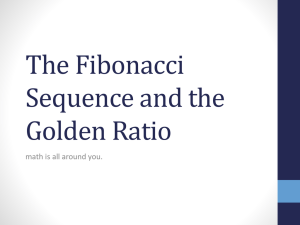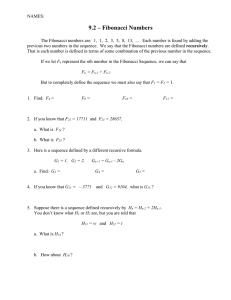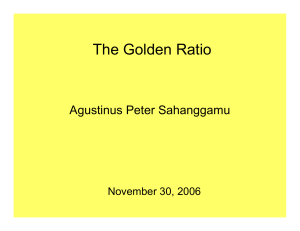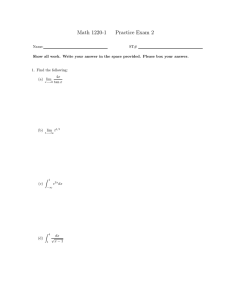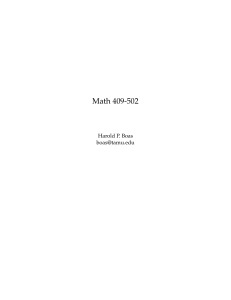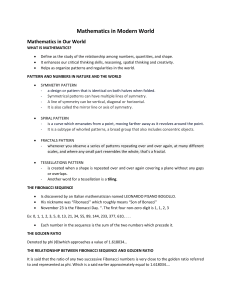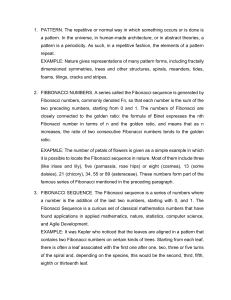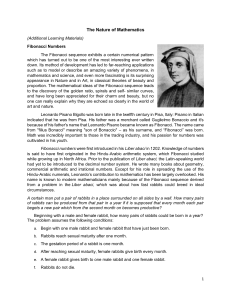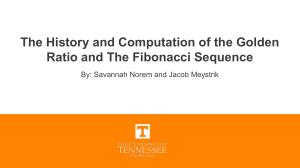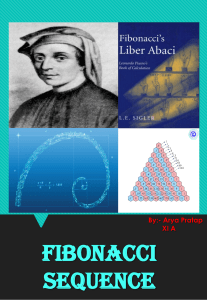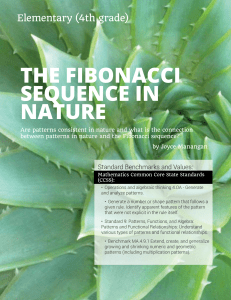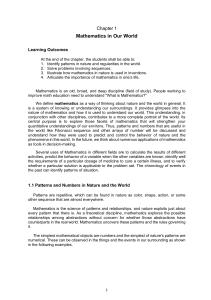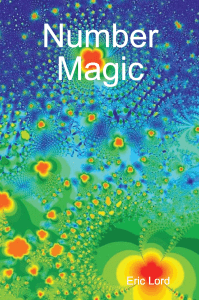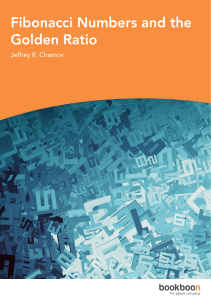Fibonacci Sequence and the Golden Ratio
advertisement
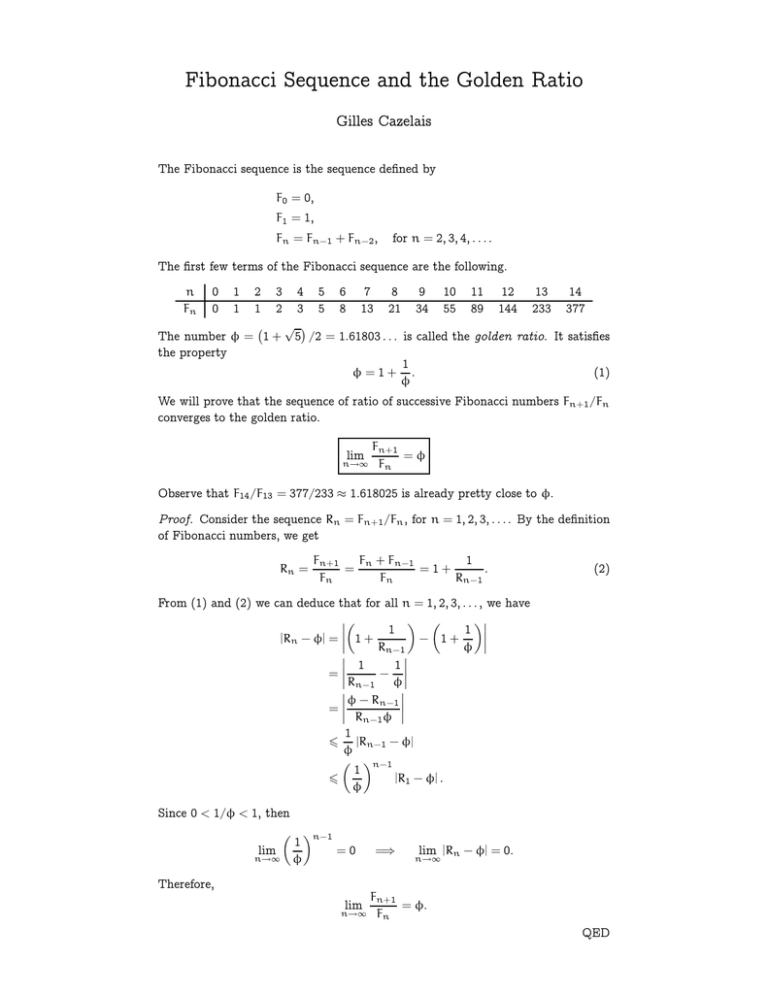
Fibonacci Sequence and the Golden Ratio Gilles Cazelais The Fibonacci sequence is the sequence defined by F0 = 0, F1 = 1, Fn = Fn−1 + Fn−2 , for n = 2, 3, 4, . . . . The first few terms of the Fibonacci sequence are the following. 4 5 6 7 8 9 10 11 12 13 14 3 5 8 13 21 34 55 89 144 233 377 √ The number φ = 1 + 5 /2 = 1.61803 . . . is called the golden ratio. It satisfies the property 1 (1) φ=1+ . φ n Fn 0 0 1 1 2 1 3 2 We will prove that the sequence of ratio of successive Fibonacci numbers Fn+1 /Fn converges to the golden ratio. Fn+1 =φ n→∞ Fn lim Observe that F14 /F13 = 377/233 ≈ 1.618025 is already pretty close to φ. Proof. Consider the sequence Rn = Fn+1 /Fn , for n = 1, 2, 3, . . . . By the definition of Fibonacci numbers, we get Rn = Fn + Fn−1 1 Fn+1 = =1+ . Fn Fn Rn−1 (2) From (1) and (2) we can deduce that for all n = 1, 2, 3, . . . , we have 1 1 |Rn − φ| = 1 + − 1+ Rn−1 φ 1 1 = − Rn−1 φ φ − Rn−1 = Rn−1 φ 1 6 |Rn−1 − φ| φ n−1 1 |R1 − φ| . 6 φ Since 0 < 1/φ < 1, then n−1 1 =0 lim n→∞ φ =⇒ lim |Rn − φ| = 0. n→∞ Therefore, lim n→∞ Fn+1 = φ. Fn QED
